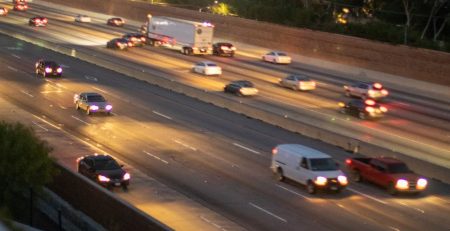Right-of-Way Laws in Arizona
Good judgment, politeness, and legal right-of-way laws work in tandem to keep you safe while driving or walking on the roads. When you yield the right of way, you can stop a devastating accident that could cause injury or property damage to vehicles. Following right-of-way laws is required by law. Unfortunately, most traffic accident-related injuries happen because people don’t yield right of way when they are supposed to.
Arizona offers several right-of-way laws to prevent auto collisions that are created by drivers who do not yield the right of way.
These laws state when a person can move into an intersection, access certain streets, or merge into traffic. They also state how drivers need to act towards pedestrians and cyclists who are sharing the road.
Right Of Way In Intersections
There are specific right-of-way regulations which vary along with the type of intersection. These include:
Controlled intersections are intersections with traffic lights, yield signs, or stop signs that work to control and move along traffic.
Drivers must comply with traffic lights and signals when at a controlled intersection. But they also need to look before entering an intersection because you can’t assume that the street is clear. Doublechecking is an important step every time you are in an intersection.
When you come up onto a green light in an intersection, you need to safely drive through it at a constant rate of speed. Even if the traffic light is green, be prepared for it to turn yellow and slow down accordingly.
What happens when you are coming into a controlled intersection that has a yield sign? Always slow down or even stop and wait until the roadway is empty before driving through. Similarly, if you come upon a controlled intersection that has a stop sign, come into a complete stop and then drive through when the intersection is clear.
What is an uncontrolled intersection? An uncontrolled intersection is an intersection which does not have a traffic light. This can even mean an intersection where the signal or light is not working.
Drivers must approach an uncontrolled intersection the same way as if they were coming upon a four-way stop. If two cars from two separate streets or highways come into the intersection at the same time, then the driver on the left should yield the right of way to the driver who is on the right.
There are also T-intersections. A T-intersection is when two streets come together and create a “T” shape. The driver who is on the bottom road of the “T” needs to yield the right of way to drivers who are traveling at the top of the “T.”
Similarly, if a driver moving in the left lane is on a continuous roadway and the driver in the right lane is on a roadway which is ending, the driver on the right has to yield the right of way to the car that is on the street that is continuing.
When A Driver Enters a Freeway
If you are driving onto a freeway ramp, you must always yield the right of way to moving traffic when merging your vehicle onto a freeway.
Right Of Way And Pedestrians
Drivers should always yield the right of way to pedestrians. This rule applies to pedestrians who are crossing into marked and also unmarked crosswalks. As well, drivers need to yield to pedestrians who are walking through an intersection when the light is green.
In addition, a driver needs to come to a complete stop when approaching school crossings when a pedestrian is in the crosswalk. Do not pass another automobile that is waiting for pedestrians to cross through.
Driveways And Alleys
If a vehicle is coming up from an alley or a driveway, the motorist must stop before getting to the sidewalk. After that, the driver needs to yield the right of way to any walkers or vehicles that are approaching.
Making A Left Turn
If you are making a left run you must yield the right of way to any oncoming vehicles. In addition, the driver who gets to the intersection first gets the right of way – unless the driver is turning left.
And when two cars get to the intersection at the same time, the vehicle on the left needs to yield to the vehicle that is on the right-hand side.
U-Turns
Drivers in Arizona may make a U-turn as long as if is safe to do so, does not obstruct traffic, and doesn’t cause a violation where signs state that a U-turn is not permitted. But, motorists must yield to oncoming traffic when making a U-turn.
Emergency Vehicles
Emergency vehicles are always given the right of way when their sirens and flashing emergency lights are on. Emergency vehicles include:
- Ambulances
- Police cars
- Fire trucks
Roundabouts
Right-of-way regulations when driving through or entering a roundabout are:
- Vehicles that are located within the roundabout are accorded the right of way
- Pedestrians or cyclists crossing the roundabout are also given the right of way
- Once you in the roundabout, drivers cannot stop to allow other motorists to enter into the roundabout
Contact an Arizona Lawyer for Help
Right-of-way laws are in place to create safety within intersections. Failing to follow these laws can be dangerous, with serious consequences, including injuries and even fatalities.
Have you been involved in an accident? If you or a loved one sustained an injury in a right-of-way collision, contact the expert personal injury attorneys at ELG Law. Contacting ELG Law will help you in the case of your car accident claim as soon as possible. Each accident is unique and damages vary from case to case. It is important to retain the services of an experienced personal injury attorney who can help you within the boundaries of your accident. Contact us to discuss the details of your accident and how we can assist you to regain the compensation you fully deserve.



